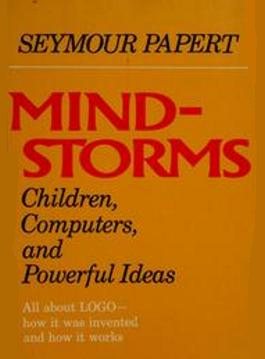| LOGO Creator Seymour Papert Dies |
| Written by Sue Gee | |||
| Tuesday, 02 August 2016 | |||
|
Seymour Papert, co-creator of the Logo programming language and the man who pioneered the idea that learning to use, i.e. program, computers changes the way children learn other things, has died at the age of 88.
Seymour Papert is known both as an educational-technology visionary and for marking a turning point in Artificial Intelligence. Logo combines these two strands of his contribution as,when it was originally conceived in the late 1960s, it was to teach concepts of programming related to Lisp and only later acquired its hallmark Turtle Graphics. Papert was born and brought up in South Africa, where as a student he was an anti apartheid activist while studying for a BA in Philosophy and a PhD in mathematics. After earning his second PhD, in math research,at Cambridge University, England he went to the University of Geneva, where he worked with Swiss philosopher and psychologist Jean Piaget, whose theories about the ways children make sense of the world influenced Papert’s view of children and learning. Papert's theory of Constructionism, would build on Piaget's Constructivist learning theories. Papert went to the U.S in 1963 and joined MIT where he spent the rest of his career. In 1967, at which time he was a professor of applied mathematics, he was appointed co-director of the Artificial Intelligence Lab (which later evolved into the Computer Science and Artificial Intelligence Laboratory, or CSAIL) by its founding director Marvin Minsky. Together, they wrote the 1969 book, “Perceptrons,” which as had a profound (damaging) effect on AI. The book appeared to prove without any shadow of doubt that a neural network could not be made to solve even the most basic and simple problem. Only a small subset of problems were "linearly separable" and hence could be learned by a one-layer, perceptron-based neural network.
As a result of the book's publication it was widely believed that neural networks weren't capable of doing anything useful, which was an over-interpretation of its conclusion which related only to single-layer networks. However, apart from a few cranks who brought neural networks into further disrepute, this area languished during what in now thought of an an AI winter. In the late 1960's Papert was also formulating Constructionism, a theory of learning that proposes that people build knowledge most effectively when they are actively engaged in constructing things in the world.
His seminal book Mindstorms: Children, Computers, and Powerful Ideas was published in 1980 proposes the ideas that children can learn to use computers in a masterful way and that learning to use computers can change the way they learn everything else. It introduces the use of Logo and the way in which turtle graphics promotes "body-syntonic reasoning", which refers to the idea that children could understand the turtle's motion by imagining how they would move if they were the turtle. This excerpt from a 1986 video clarifies Papert's view of the role of computers in education.
You'll notice the use of Lego along with Logo in this video. Papert's collaboration with the LEGO company started in 1985 the company named its Mindstorms robotics kits in recognition of Papert's book. LEGO also sponsored the MIT Media Lab and in 1989 endowed a chair there with Papert becoming the first LEGO Professor of Learning Research. In 1998, after Papert became professor emeritus, the name of the professorship was modified, in his honor, to the LEGO Papert Professorship of Learning Research. Mitch Resnick, inventor of Scratch is the current MIT Media Lab LEGO Professor of Learning Research says in the MIT obituary notice: “For so many of us, Seymour fundamentally changed the way we think about learning, the way we think about children, and the way we think about technology." Seymour Aubrey Papert More InformationMIT News: Professor Emeritus Seymour Papert, pioneer of constructionist learning, dies at 88 ACM News: In Memoriam: Seymour Papert 1928-2016 Related ArticlesGoogle Project Bloks Tangible Programming For Kids Artificial Intelligence - Strong and Weak
To be informed about new articles on I Programmer, sign up for our weekly newsletter, subscribe to the RSS feed and follow us on Twitter, Facebook, Google+ or Linkedin.
Comments
or email your comment to: comments@i-programmer.info <ASIN:0465046746>
|
|||
| Last Updated ( Wednesday, 03 August 2016 ) |





